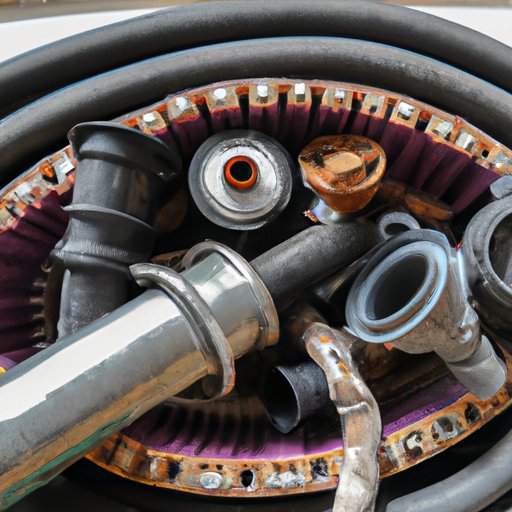Introduction
Is your washing machine failing to drain properly? Dealing with a washer that refuses to drain can be an incredibly frustrating experience. Fortunately, most drain problems can be easily resolved by following a few simple steps. In this guide, we’ll show you how to identify common issues that prevent your washing machine from draining and how to solve them.
Before we dive in, let’s look at why addressing your washer’s draining issue is so crucial. A clogged or malfunctioning drain can cause water damage to your floors, damage your washer, cause unnecessary wear and tear on your clothing, and create an unpleasant smell in your laundry area.
II. Identifying the Problem
Before we can fix the issue, it’s important to determine the root of the problem. Three common problems can cause draining issues: clogged drain hose, a faulty pump, or a damaged washer belt.

III. Check the Drain Hose
One of the easiest problems to diagnose is a clogged drain hose. First, unplug the washing machine and disconnect the hose from both the washer and the drain. Be prepared for water or debris to spill out of the hose. Once the hose is disconnected, examine the inside for debris or any signs of blockage. Use a brush or towel to remove any buildup that may be clogging the hose.
After cleaning the hose, reattach it to both the drain and washer. Run a test load to ensure the washer is now draining correctly and that water is flowing through the drain hose without obstruction.
IV. Inspect the Pump Filter
If the drain hose appears clear, the issue may then lie with the washing machine’s pump filter. The pump filter is responsible for protecting the washer’s pump from foreign objects such as coins, hair, or lint.
Find the pump filter, which is usually located at the front of the washer, behind a small door. Open the door, and you should see the filter. Remove it and clean any debris that has collected inside by hand or with a brush.
After cleaning the filter, reinsert it and run a test cycle to ensure the issue has been resolved.

V. Check the Washer Belt
If the first two steps didn’t resolve the problem, the issue may be due to a loose or damaged washer belt. This is especially likely to be the case if your washing machine makes noise during the spin cycle.
To check the washer belt, first, make sure the washing machine is unplugged. Next, locate the belt. It should be visible from the back of the washer. Check for any signs of damage, such as cracks, fraying, or wear and tear. If the belt is loose or has suffered damage, you will need to replace it.
Refer to your washing machine’s manual for instructions on how to replace the belt. If you don’t feel confident doing it yourself, call an appliance repair specialist.
VI. Use a Drain Snake
If the first three steps don’t fix the problem, it may be necessary to use a drain snake to dislodge and remove any blockage that is preventing your washer from draining. Drain snakes are readily available at most hardware stores. Remove the hose leading from the washer to the drain and guide the snake down until it reaches the blockage. Agitate the blockage with by turning the snake’s handle. Once the blockage has been cleared, reconnect the hose and see if the washer drains properly.
VII. Call a Professional
If none of the first five steps work, it may be more appropriate to get an appliance repair specialist to take a look at your washer. Professionals have the equipment and expertise to identify the problem’s root and have it fixed quickly. Be sure to consult a licensed plumber or appliance repair specialist.

VIII. Preventing Further Drain Issues
Maintaining your washing machine is the key to preventing future issues. Be mindful of the following key preventive measures:
- Regularly clean the washer’s drum, including under the bellow seal, door and detergent dispenser.
- Inspect the drain regularly for any foreign objects, and ensure that the drain hose is clean and free from debris.
- Run a load with hot water without clothes and use vinegar or a proprietary cleaning product to break down any build-up in the washer.
- While washing, avoid overloading the machine, use the correct amount of detergent based on the washer’s instruction to avoid residual build-up that may cause a clog.
It’s also essential to call a professional for severe issues. If your washer is shaking, leaking water, or showing other signs of wear and tear, it’s best to have a specialist check it.
IX. Conclusion
Getting your washer to drain is sometimes a frustrating and time-consuming experience, but armed with the right knowledge, you can tackle the issue effectively. Remember to clean the drain hose, inspect the pump filter, and check for a loose or damaged washer belt. Use a drain snake if required, and if necessary, don’t hesitate to call a professional.
With proper maintenance, your washing machine will run efficiently for years to come.


